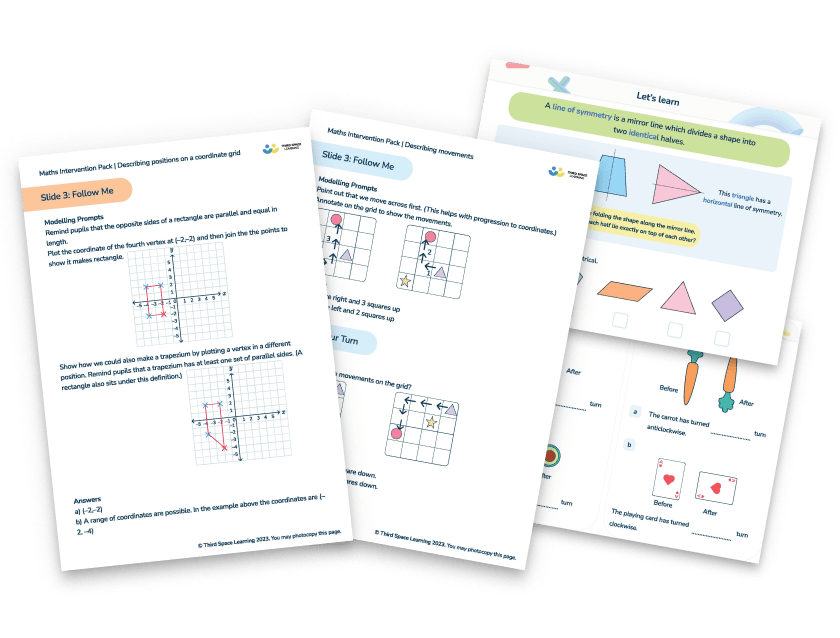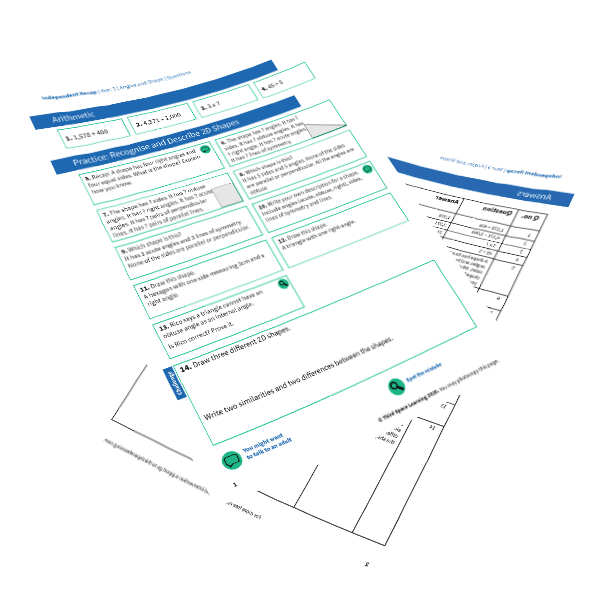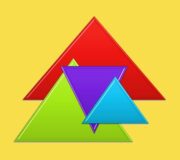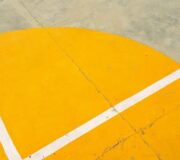Regular And Irregular Shapes: Explained For Primary School Parents
This blog will be answering the questions “what is a regular shape?” and “what is an irregular shape?” as well as providing you will all of the information you need to help your child secure their shape knowledge. There are also a number of shape based questions for your child to test their skills with at the bottom of the post.
What is a regular shape?
A regular shape is a 2D shape where all (interior) angles and sides measure the same.
What is an irregular shape?
An irregular shape is a shape which has sides and angles of any length and size.
Regular vs irregular shapes: What do they look like
A square, by definition, is a regular shape: it is, in fact, a regular rectangle.
A regular triangle is called an equilateral triangle.

Unlimited primary maths tutoring with Skye, the voice-based AI maths tutor.
Built on the same principles, pedagogy and curriculum as our traditional tutoring but with more flexibility, reach and lower cost.
Join the schools already helping hundreds of primary pupils nationwide with Skye’s one to one maths tutoring
Watch Skye in actionExamples of irregular shapes and regular shapes
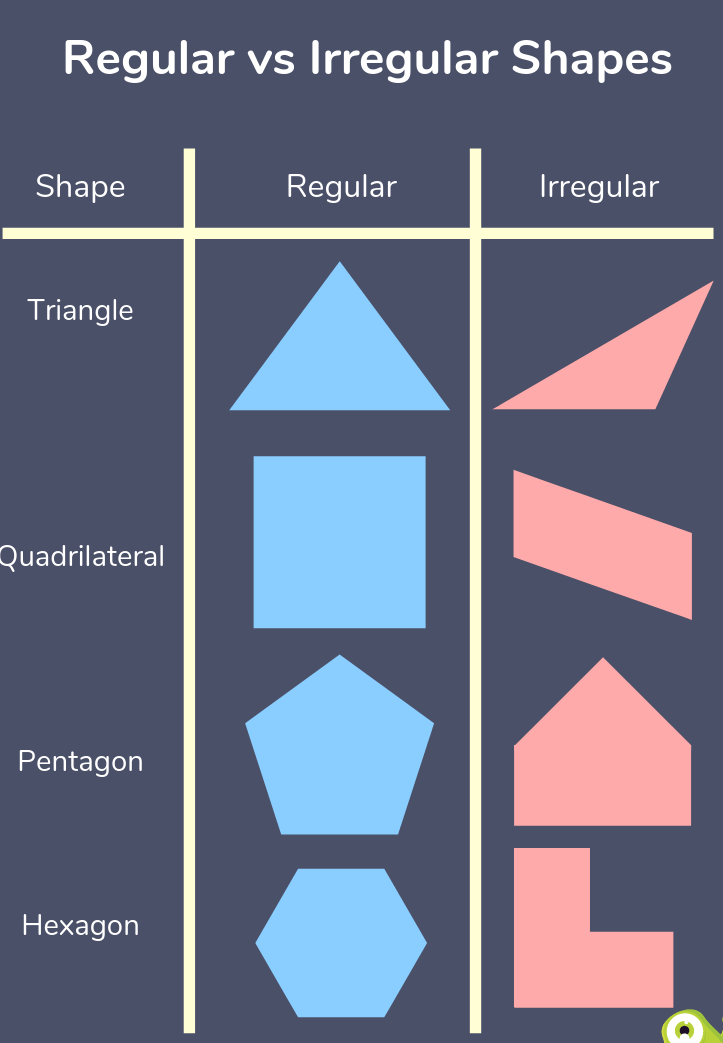
2D Shapes Worksheet Year 3
Download this FREE recognising 2D shapes Geometry worksheet for Year 3 pupils, from our Independent Recap collection.
Download Free Now!When will my child learn about regular and irregular shapes in primary school?
When referring to regular shapes in the curriculum, the term ‘polygon’ is used – a polygon is a 2D shape with straight sides.
In Year 4 the terminology of ‘regular polygon’ is first introduced. This is when children will compare and order angles in preparation for using a protractor and compare lengths and angles to decide if a polygon is regular or irregular.
In Year 5, pupils distinguish between regular and irregular polygons based on reasoning about equal sides and angles.
In Year 6, pupils compare and classify geometric shapes based on their properties and sizes and find unknown angles in any triangles, quadrilaterals, and regular polygons.
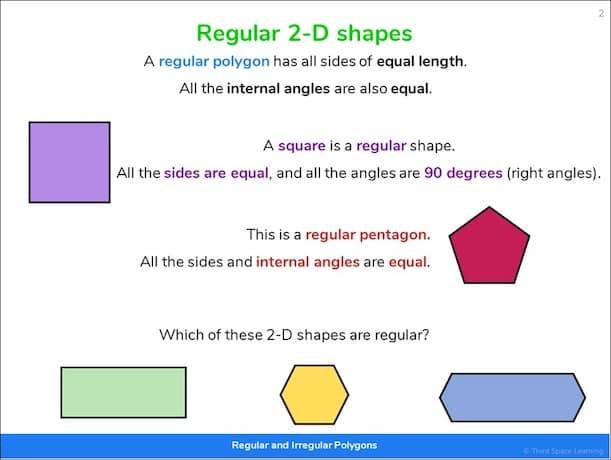
Key stage 2 regular and irregular shape practice questions
1) The diagram shows a pentagon (not drawn accurately). Each side of the pentagon is the same length. Is the shape a regular pentagon? Explain your answer.
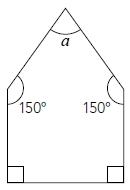
2) Here is an equilateral triangle drawn on a circle.
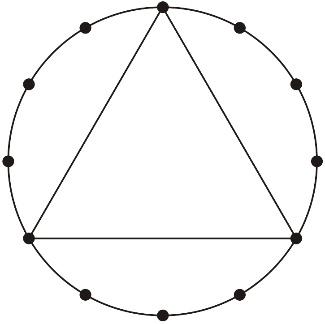
Use a ruler to draw a regular hexagon on this circle.
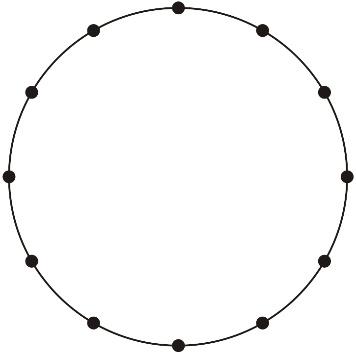
3) Jack says, “This rhombus is a regular quadrilateral.” Explain why Jack is not correct.
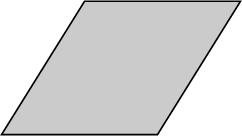
4) Draw crosses on the two shapes that are in the wrong places in the sorting diagram.
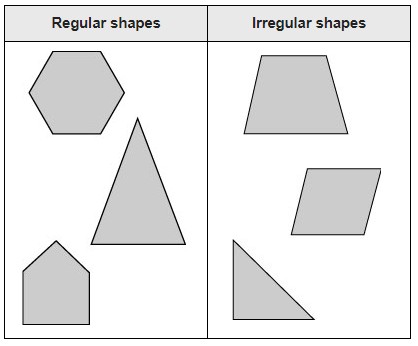
Wondering about how to explain other key maths vocabulary to your children? Check out our Primary Maths Dictionary, or try these other maths terms:
DO YOU HAVE STUDENTS WHO NEED MORE SUPPORT IN MATHS?
Skye – our AI maths tutor built by teachers – gives students personalised one-to-one lessons that address learning gaps and build confidence.
Since 2013 we’ve taught over 2 million hours of maths lessons to more than 170,000 students to help them become fluent, able mathematicians.
Explore our AI maths tutoring or find out about a primary school maths tutor for your school.
